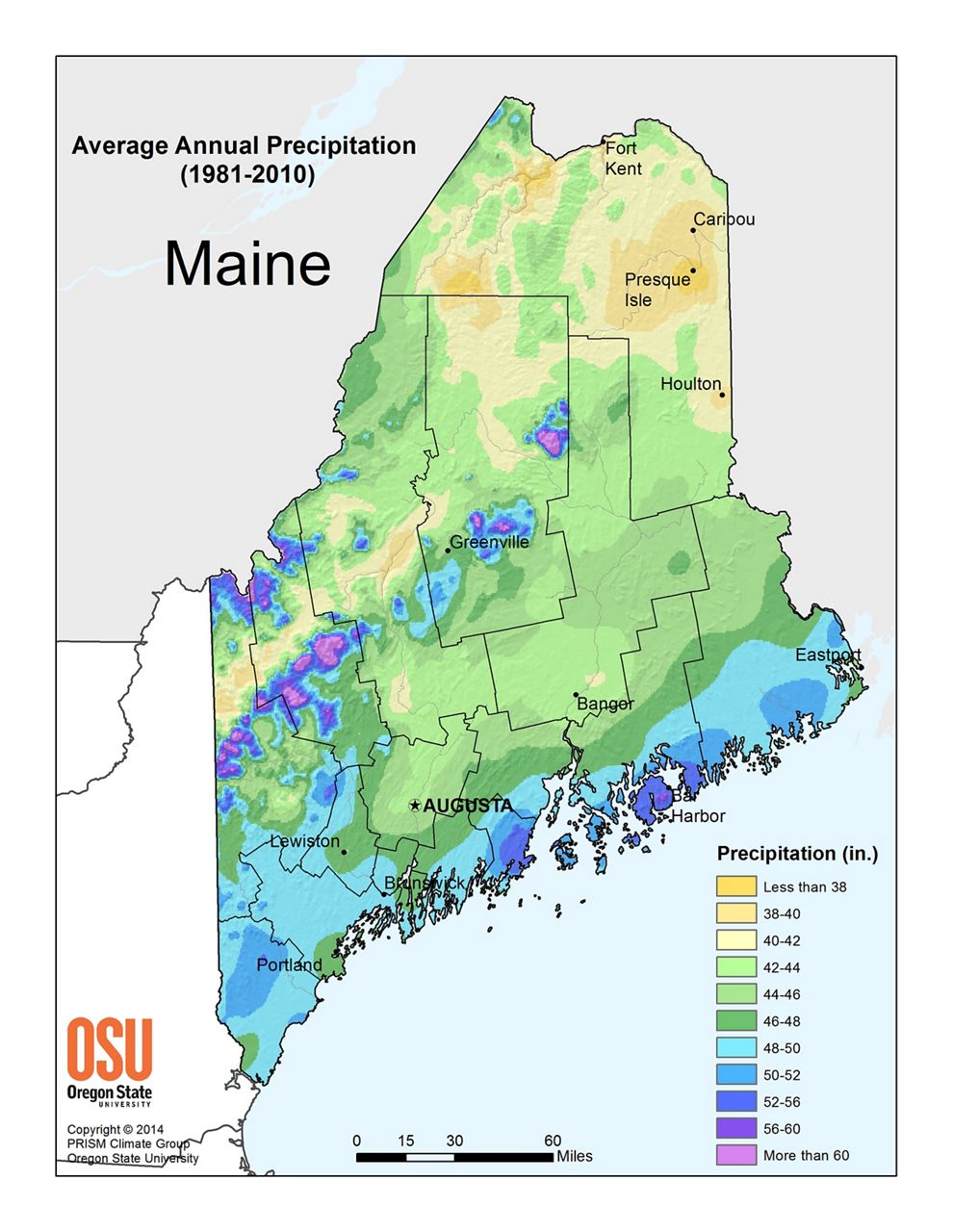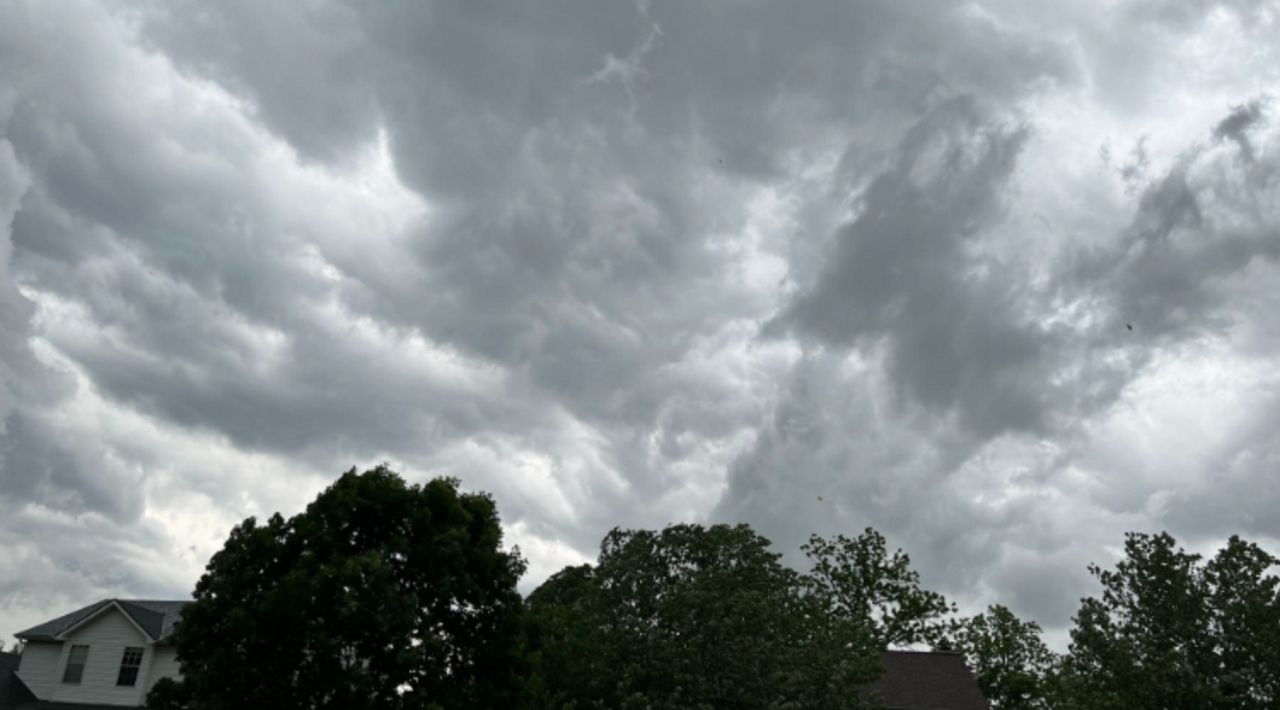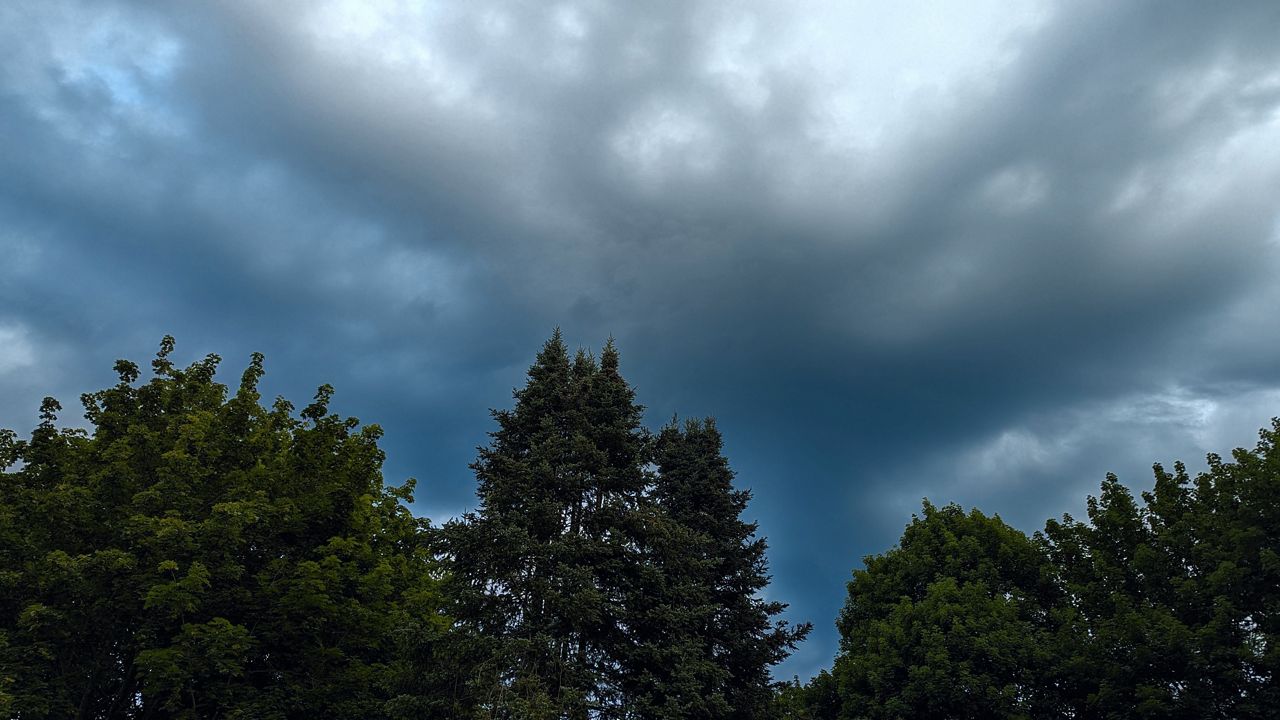From Portland to Presque Isle, Maine’s climate offers some variety, thanks to the Atlantic and the Appalachians.
Nearly all of the state is in a single climate classification–"warm-summer humid continental"–but that broad stroke doesn’t quite capture the variation within the state.
Winter brings a huge range in temperature. The average temperature for December through February is only around 11 degrees in the north, while it’s closer to 25 degrees on the coast.
Summer, on the other hand, is more uniform. Most of the state has an average temperature of 62 to 65 degrees.
You can see the big wintertime difference in this graph of normal highs, and how that gap closes during the summer.
Long-term precipitation averages, which include both rainfall and melted snow, are greatest near the coast and in the higher elevations. There, average precipitation is typically at least 50 inches in a year. In fact, the highest mountains average more than 60 inches.
Farther north, precipitation is about 40 inches or less.

Snowfall is considerably lower in the south compared to the north, though, thanks to the relative warming influence of the Atlantic Ocean. Portland’s average annual snowfall is around 70 inches, while Caribou is more than 110 inches.
The average temperature in Maine has risen by couple of degrees in the past 100 years, with much more winter warming than summer warming, according to the National Centers for Environmental Information. That’s led to earlier ice-outs on the lakes.
Flooding may become more common as precipitation continues to increase and sea level keeps rising. Sea level has risen about eight inches in Portland since 1912, and it’ll likely rise at least another foot by 2100.










